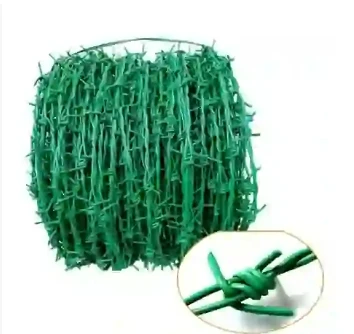-
 Phone:
Phone: -
 Email:
Email:

barbed wire
The History and Significance of Barbed Wire
Barbed wire, a seemingly simple invention, has played a crucial role in shaping agricultural practices, land use, and even social dynamics since its inception in the 19th century. It is a type of fencing wire that features sharp edges or points arranged at intervals along the strands, designed primarily to deter animals and intruders. This article explores the origins, evolution, and multifaceted significance of barbed wire in modern society.
First patented in 1867 by Michael Kelly, barbed wire emerged as a revolutionary solution for farmers facing challenges from free-ranging livestock. Before its invention, traditional wooden fences were expensive and labor-intensive to construct, making it difficult for farmers to protect their crops and livestock effectively. Kelly's design featured barbs that cleverly impaled or pricked any animal attempting to breach the fence, making it an effective barrier at a fraction of the cost of wooden fencing. However, it was Joseph Glidden who truly popularized and refined the design in 1874, creating a more functional version that would become widely adopted across the American Midwest.
The rapid spread of barbed wire transformed the American landscape during the late 19th century
. As settlers moved westward, the open plains were increasingly fenced off, leading to a significant shift in land use. The establishment of property lines helped to prevent disputes between neighboring farms, facilitating the growth of agriculture in the region. Barbed wire effectively ended the era of open-range grazing by restricting cattle and sheep from wandering into crops, which ultimately contributed to the rise of modern ranching practices.barbed wire

However, the impact of barbed wire went beyond agriculture. It became a symbol of conflict and division, particularly during events such as the infamous Range Wars in the United States, where tensions erupted between cattle ranchers and farmers over land use and access. Those conflicts often involved violent confrontations, with barbed wire at the heart of many disputes. As a result, the wire became an emblem of both protection and aggression, serving as a physical barrier that separated communities and created divisions.
Barbed wire found new applications during the 20th century outside of agriculture, most notably during wartime. Its use in military operations became prevalent, serving as a formidable obstacle against both enemy troops and vehicles. For example, barbed wire was extensively used during World War I, creating no man's land between opposing trenches and adding to the grim realities of warfare. The wire was not only a physical barrier but also a psychological one, symbolizing the brutality and devastation of conflict.
In contemporary society, barbed wire continues to serve various purposes. It is commonly found in prisons, military installations, and along national borders, serving as a deterrent to unauthorized entry. The presence of barbed wire at borders often raises ethical questions regarding immigration and human rights. Its use in these contexts highlights how a simple invention can embody deeper societal implications, reflecting a tension between security and freedom.
In conclusion, barbed wire is more than just a practical tool; it is a historical artifact that illustrates the complexities of human interaction with the land and each other. From its agricultural roots to its modern implications in security and conflict, barbed wire has left an indelible mark on society. As we continue to navigate issues of land use, security, and human rights, the legacy of barbed wire serves as a reminder of the dualities present in human innovation protection and division, necessity and aggression. Its story is a reflection of our ongoing struggle to balance these opposing forces in the quest for order and coexistence.
-
Wire Mesh for Every Need: A Practical SolutionNewsJul.25,2025
-
Steel Fences: Durable, Secure, and Stylish OptionsNewsJul.25,2025
-
Roll Top Fencing: A Smart Solution for Safety and SecurityNewsJul.25,2025
-
Cattle Farm Fencing Solutions for Maximum SecurityNewsJul.25,2025
-
Affordable Iron Binding Wire SolutionsNewsJul.25,2025
-
Affordable Galvanized Wire SolutionsNewsJul.25,2025
-
Wire Hanger Recycling IdeasNewsJul.25,2025








